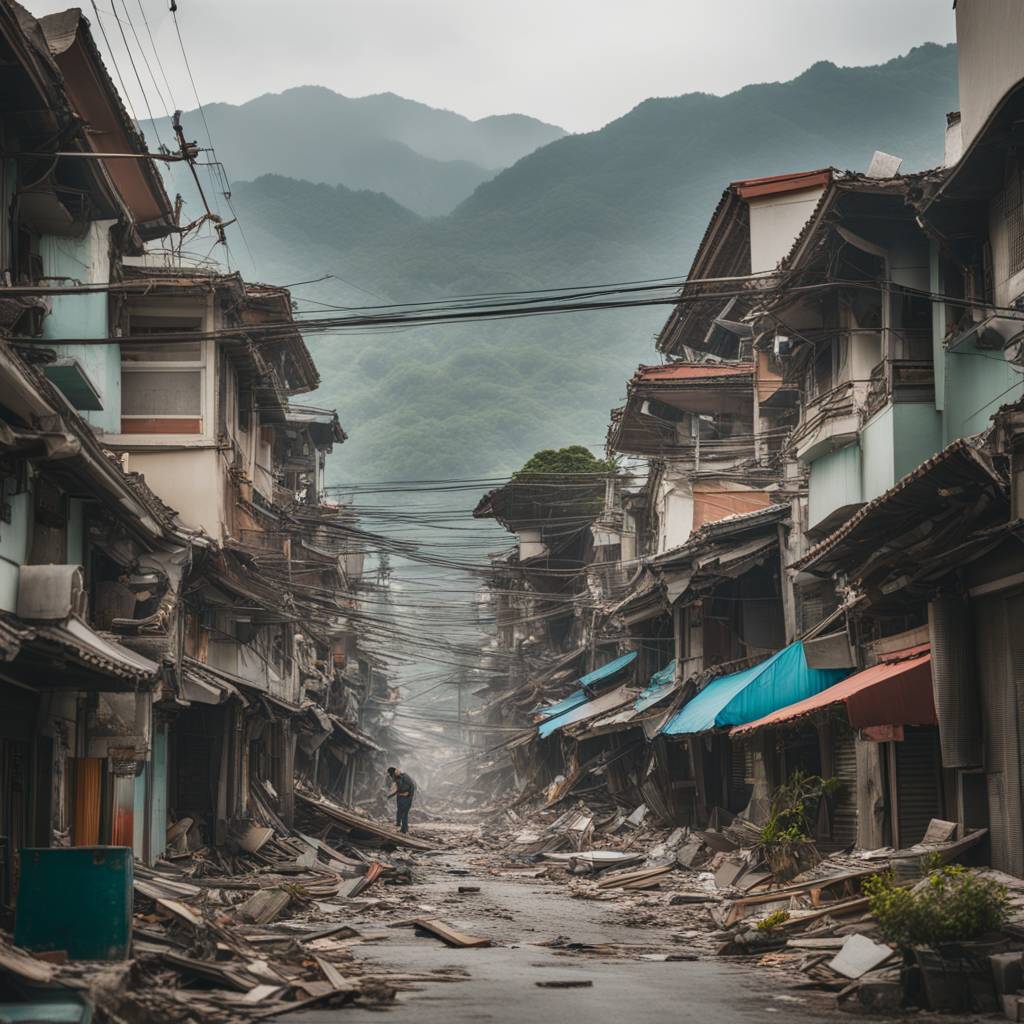A powerful earthquake hit the entire island of Taiwan early on a Wednesday, collapsing buildings in the southern city of Hualien and causing a tsunami that washed ashore on southern Japanese islands. In Hualien, a five-story building was heavily damaged, leaning at a 45-degree angle after its first floor collapsed. In the capital city of Taipei, tiles fell from older buildings and some newer office complexes were affected. Train and subway services were suspended across the island, but quickly returned to normal.
The Japan Meteorological Agency detected a tsunami wave of 30 centimeters on the coast of Yonaguni island about 15 minutes after the earthquake, with waves likely also hitting Miyako and Yaeyama islands. Japan’s Self Defense Force sent aircraft to assess the tsunami’s impact around the Okinawa region and prepared shelters for potential evacuees if needed. The earthquake’s magnitude was reported as 7.2 by Taiwan’s earthquake monitoring agency and 7.4 by the U.S. Geological Survey, striking at 7:58 a.m. about 18 kilometers south-southwest of Hualien.
The head of Taiwan’s earthquake monitoring bureau mentioned that effects of the earthquake were felt as far away as the Taiwanese-controlled island of Kinmen, off the coast of China. Multiple aftershocks were experienced, with one reaching a magnitude of 6.5 and a depth of 11.8 kilometers. The Pacific Tsunami Warning Center determined there was no tsunami threat to Hawaii or the U.S. Pacific territory of Guam. This earthquake was considered the most significant in Taiwan since the 1999 temblor that caused extensive destruction, as Taiwan is located along the Pacific “Ring of Fire,” a region prone to seismic activity.
The earthquake’s impact on Taiwan and southern Japanese islands was substantial, with buildings collapsing in Hualien and infrastructure being affected in Taipei. Train and subway services were temporarily suspended, but quickly resumed normal operations. The tsunami waves reached several Japanese islands, prompting swift response from authorities to assess the situation and prepare for potential evacuations. The earthquake’s magnitude varied slightly between reports from Taiwan’s earthquake monitoring agency and the U.S. Geological Survey, but both agencies confirmed the significant impact of the seismic event.
The aftershocks following the main earthquake added to the overall impact and disruption faced by residents in Taiwan. Despite the tremors being felt as far as the Taiwanese-controlled island of Kinmen, efforts were made to assess the situation and address any potential risks. The Pacific Tsunami Warning Center’s determination that there was no threat to Hawaii or Guam provided relief to residents in those areas. The earthquake’s occurrence along the Pacific “Ring of Fire” underscored the seismic activity inherent in regions surrounding the Pacific Ocean, emphasizing the importance of preparedness and response measures in the face of such natural disasters.
Overall, the earthquake in Taiwan and its effects on Japanese islands highlighted the vulnerability of these regions to seismic activity and the importance of disaster preparedness. The swift response from authorities in both Taiwan and Japan to assess the situation, provide assistance, and ensure public safety demonstrated the importance of effective emergency management. As residents worked to cope with the aftermath of the earthquake and subsequent aftershocks, it served as a reminder of the ongoing risks posed by earthquakes in areas along the Pacific “Ring of Fire.” Efforts to strengthen infrastructure, enhance early warning systems, and ensure effective communication in times of crisis were vital in mitigating the impact of such natural disasters in the future.


